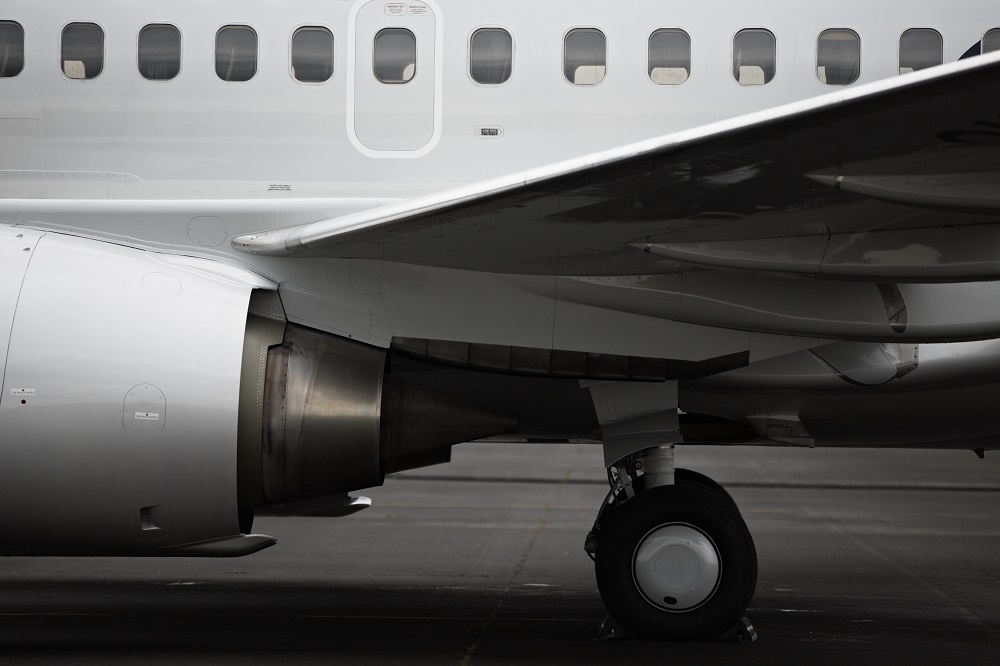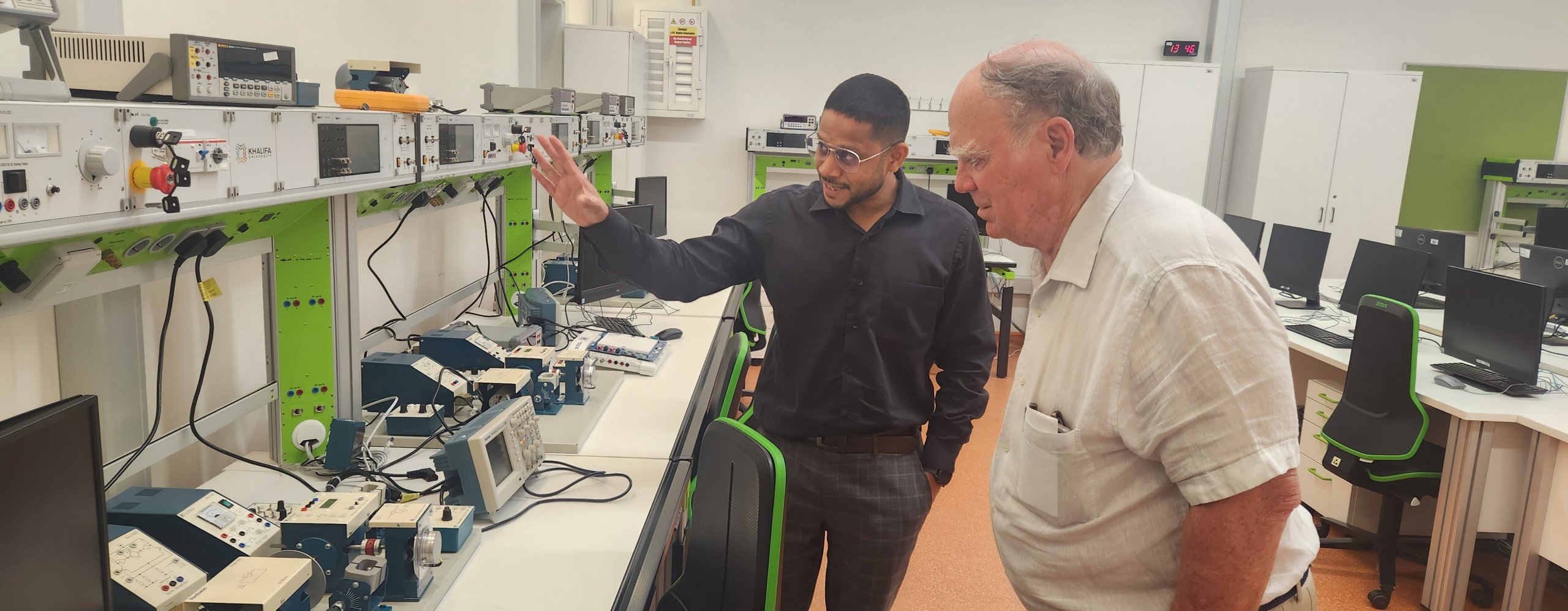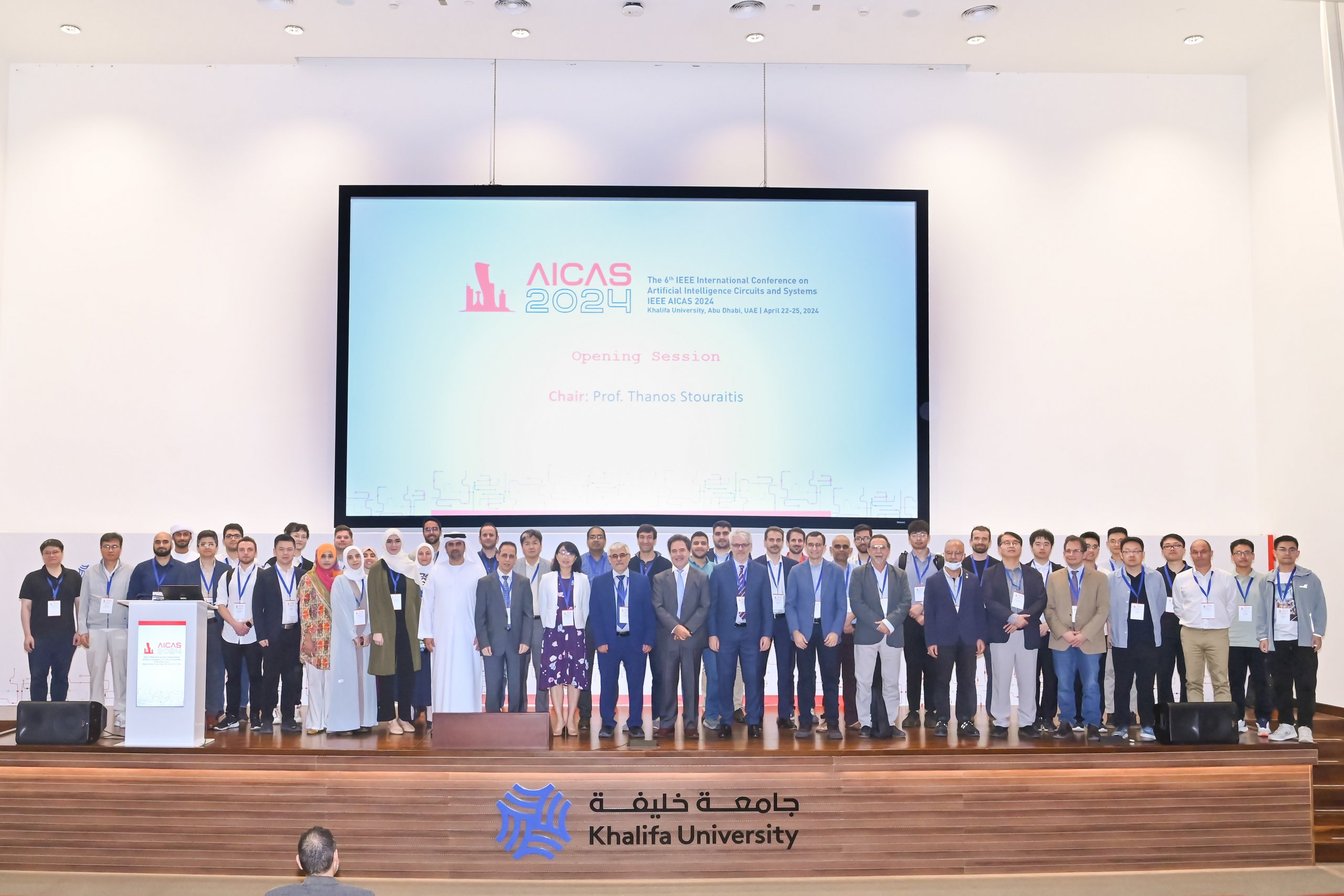
Up to 80% of an airplane is covered in an aluminum alloy, making these alloys the most important aerospace materials. Understanding their mechanical and physical properties, however, remains a challenge for engineers.
Read Arabic here.
The aerospace industry is constantly evolving, with new materials emerging that can revolutionize the sector. These materials must be lightweight to make air transport more economical and greener, but must also be rigid and strong enough to withstand intense mechanical stress. As aluminum alloys are increasingly used for their high damage tolerance and toughness, quantifying this ‘rigidity’ is important to understand how effective the material is.
To determine the stiffness of a material—to find its Young’s modulus—Dr. Dalaver Anjum, Assistant Professor of Physics, has collaborated with Dr. Muna Khushaim from Taibah University, Saudi Arabia, to develop a method of ‘seeing’ how the alloys are impacted at the nanometer scale by adding different metals. They published their findings in Microscopy Research and Technique.
The Young’s modulus of a material is a fundamental property that cannot be changed within the elastic limit of that material. It is the stiffness of a material and states how easily it can bend or stretch, dependent upon temperature and pressure. When a material reaches a certain stress point, it will begin to deform. Consider a rubber band: when a rubber band is pulled, it is stretched, but not deformed. Stretch too far, however, and the band will begin to deteriorate or deform until it inevitably breaks. For engineers across all domains, the Young’s modulus is a critical constant for research and design as every material responds differently to stress.

One of the ways to enhance the mechanical properties of metals involves synthesizing their alloys by mixing one metal with another. For example, the properties of aluminum can be dramatically enhanced using small amounts of copper or lithium. These added metals are known to exist in aluminum metal as precipitates and can make materials stronger by impeding the movement of metal atoms across the crystal defects in the host metal’s lattice structure. The stiffer a material, the higher its Young’s modulus.
“The stresses and elasticity of the strengthening precipitates in aluminum-based alloys play an important role in improving their mechanical and structural properties,” explained Dr. Anjum. “Using precipitates is known as strain hardening or precipitate hardening, with this method affecting the Young’s modulus of the host metal in question.”
Determining the Young’s modulus of the new alloy can be difficult. It is usually determined experimentally at macro or bulk scales and can only provide average values of the mechanical qualities. It would be preferable to determine it at nanoscale, simply because the precipitates adding to the Young’s modulus result are present at the nanoscale; they’re like nanoparticles in the host metal.
“More than 15 years ago, transmission electron microscopes were first used in conjunction with electron energy loss spectroscopy (EELS) detectors to estimate the Young’s modulus of metals,” explained Dr. Anjum. “But this only provides the average value on a rough scale. Ideally, we would like to be able to show how the precipitates impact the stiffness of the metal at the nanoscale and even sub-nanoscale. We could then see how the strain field is distributed around the precipitates in the metal lattice structure.”
To better ‘see’ the strain field and Young’s modulus simultaneously, Dr. Anjum and Dr. Khushaim developed a new method to generate spatially resolved maps of metal alloys by combining dark-field scanning transmission electron microscopy (DF-STEM) and EELS data and then processing these datasets with specific software algorithms.
The TEM results show the structure of the precipitates in the aluminum metal matrix, while the EELS data shows whether or not the electrons that pass through the material lose some of their energy or have their paths deflected by the atoms in the matrix. The amount that the electron’s path is deflected can be measured with DF-STEM and gives information about the dispersion of the atoms within the structure. The relative dispersion difference between the matrix and precipitate regions can then be expressed as ‘strain.’ Similarly, the electron beam also forces the freely roaming electron gas or plasmons to oscillate around their equilibrium and this can be measured with EELS. The frequency of these oscillations is related to the stiffness of materials.
The researchers then feed this data into their algorithms to map and ‘see’ the strain fields in the alloy matrix. Using this data, they can then calculate the Young’s modulus of the material in question.
This research has great potential in the UAE as the method can be used to develop the mechanical properties of metal alloys with applications in the aerospace industry and other areas important to the nation.
“Since it is based on measuring the fundamental properties of metals at the nanoscale, it offers a window to developing next-generation metal alloys based on fundamental materials science,” explained Dr. Anjum. “Therefore, these alloys are expected to be more durable, while also providing the opportunity of producing next-generation scientists and engineers in the UAE.”
Jade Sterling
Science Writer
24 January 2021






